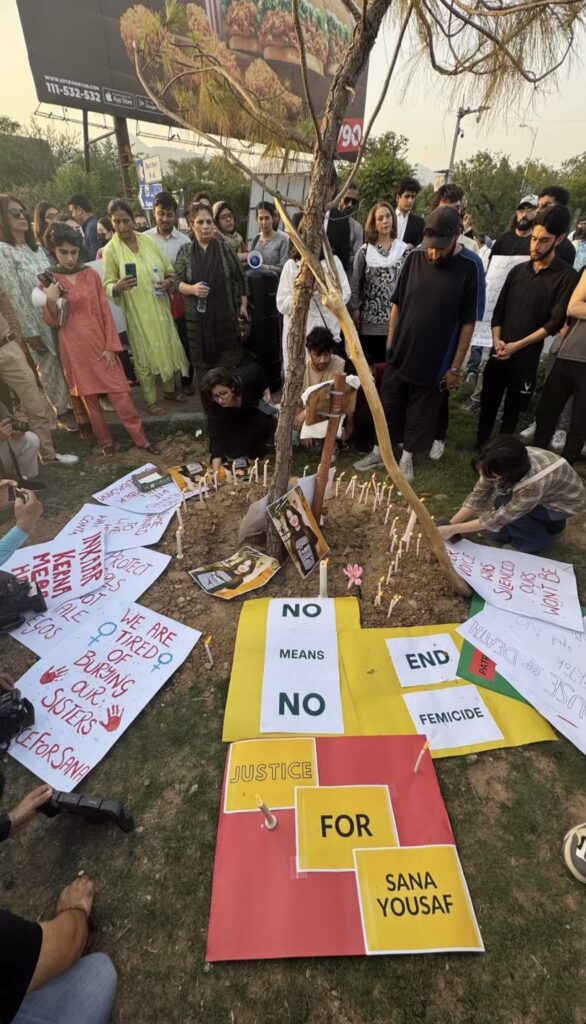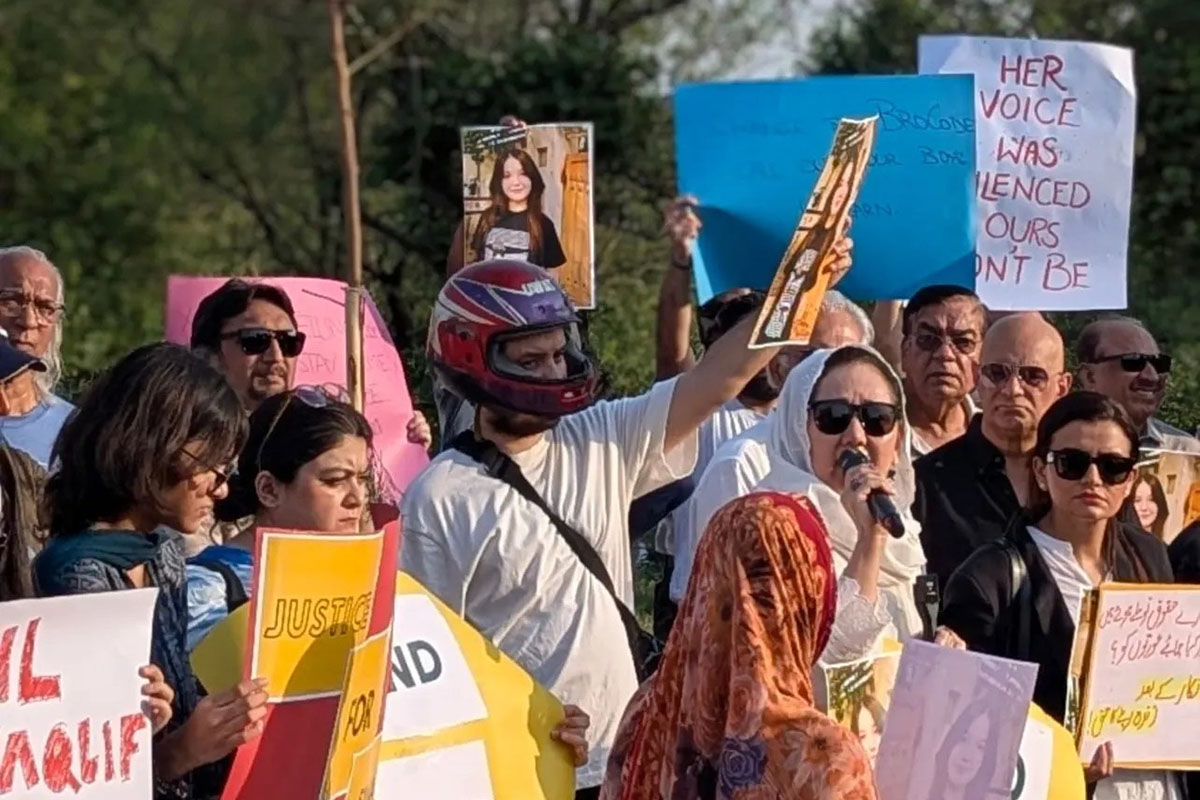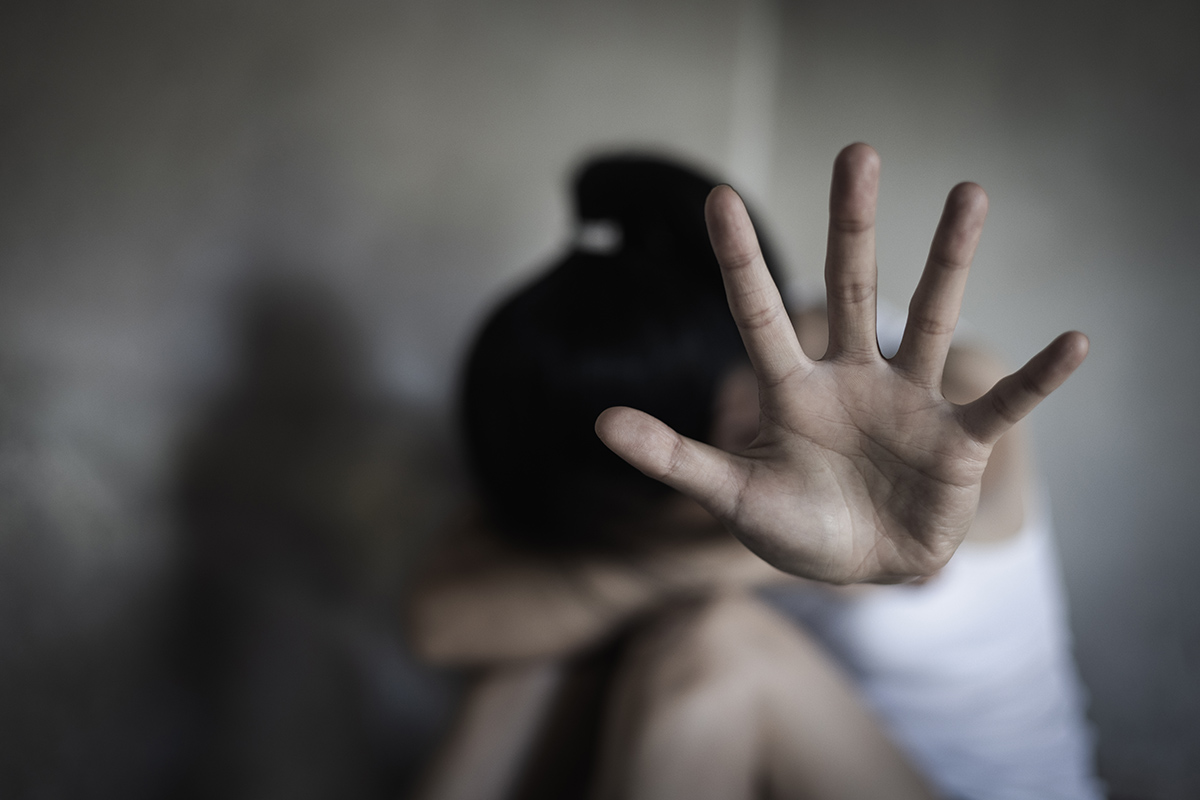She was a Minor, not a TikToker, Call Sana Yousaf’s murder what it is — A Femicide
June 7by Ramna Saeed
Sana Yousaf, a minor girl with dreams and hopes recently became prey of institutionalized toxic masculinity. The tragedy escalated when the totality of her identity was reduced to a mere “tiktoker” undermining her identity. This dehumanization is not just irresponsible journalism; it’s a twisted erasure of her personhood. She wasn’t a headline. She was a daughter, a young girl, and a human being.
What happened to Sana was neither an accident nor a mere act of rage. It was a fully planned act of violence by a literate young man, who knew the anarchist system could provide him refuge. She was stalked, harassed and abused by a grown man only to get killed. It was femicide, a deliberate act of gender-based violence, the brutal murder of a girl in a society where misogyny is systemic, normalized, and glamorized.

If we’re going to talk about what happened to Sana, then we have to say it plainly that she was killed because she was a girl in a patriarchal society that sees women as disposable. This wasn’t an isolated incident. It was a symptom of a much deeper, darker rot. It’s a system that fails girls over and over again.
Sana’s murder didn’t happen in a vacuum. It happened in a country where violence against women is routine, where girls are silenced before they can speak, where so-called “honour’’ is weaponized and justice is compromised. Every step of the way, the institutions responsible for protecting our daughters fail them, from police who don’t register complaints, to courts that delay justice, to media outlets that twist narratives for views. The state isn’t just absent in these stories. It’s complicit.

Where is the protection for girls like Sana? Where are the policies to prevent such violence? Where is the political will to prioritize gender-based violence as a national emergency? The state only wakes up after public outrage, and even then, only for a moment. Then everything goes back to silence, to apathy, to business as usual. This is not a law-and-order failure. This is a failure of values.
We cannot ignore the role that the media plays in shaping public narrative, evoking their emotions and getting viewership by propagating sensationalism. In South Asian television dramas and films, violence against women is often romanticized, justified and glorified. The abusive husband is “redeemed.” The stalker becomes the “hero.” The victim is shown as resilient for staying in an abusive relationship. How many times have we seen a woman slapped on screen, followed by a tearful apology as if that makes it okay?
This repeated portrayal tells girls that their pain is part of love and tells boys that their control is part of masculinity.
The glamorization of violence has consequences. It numbs audiences. It teaches tolerance for abuse. It feeds the same culture that allowed someone to believe they could take Sana’s life and still be defended, still be pitied, or worse — still be celebrated for their “love” gone wrong.
The truth is, we have stopped being shocked by the murder of women. That’s the real tragedy. We scroll past their faces, briefly enraged before the next scandal takes over our feeds. This normalization of violence in newsrooms, in homes, in film sets, and in courtrooms is precisely why the killing continues.
We need to call this what it is: femicide. Not an accident. Not a quarrel. Not a sad story. Femicide. The deliberate killing of a girl because of her gender, in a country that offers more shame to victims than justice to perpetrators.
We must resist the urge to move on. We must hold space for grief, but also for rage. The kind of rage that demands structural change in how we police, how we legislate, how we report, and how we teach boys what it means to be men.
Justice must not be delayed. Justice must not be diluted. Justice must not be denied.
Anything less is a betrayal, not only for Sana Yousaf but for every girl forced into silence, every woman murdered and forgotten, every family left with grief and no answers.
We owe Sana the truth. Not just in how we tell her story, but in what we demand from it.
We owe her accountability — from the state, the media, and ourselves. Say her name. Tell the truth.
This was femicide.
Ramna Saeed is a young journalist and digital media professional passionate about human rights, youth voices, gender equality, and digital advocacy. She has reported on critical issues, including mass surveillance, refugee rights, and women’s leadership, with bylines in Global Voices, Independent Urdu, Yeni Safak Urdu, BBC Urdu, and other media outlets. As the founder of She Leads Pakistan and a Diana Award recipient, she aims to amplify marginalised voices. Her ambition is to reshape Pakistan’s media landscape into a truth-seeking force through impactful storytelling.




